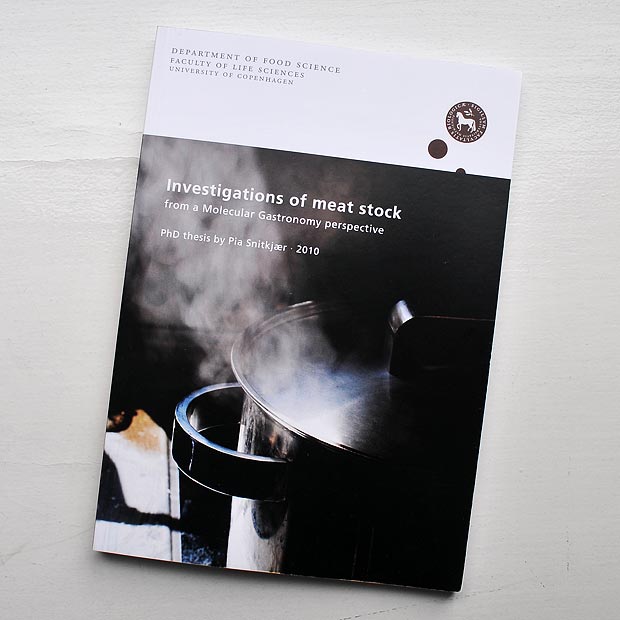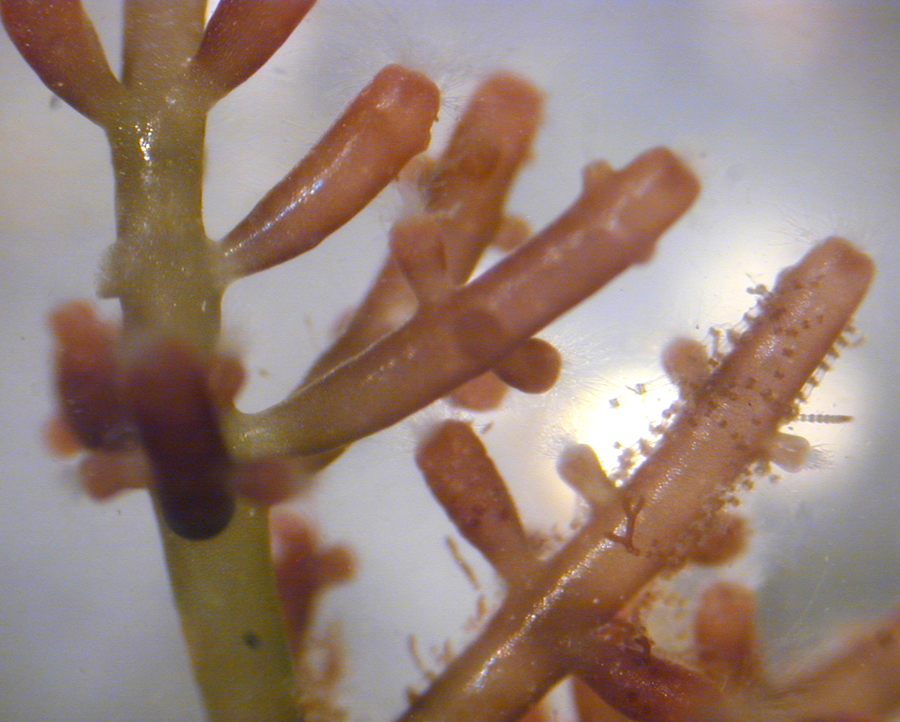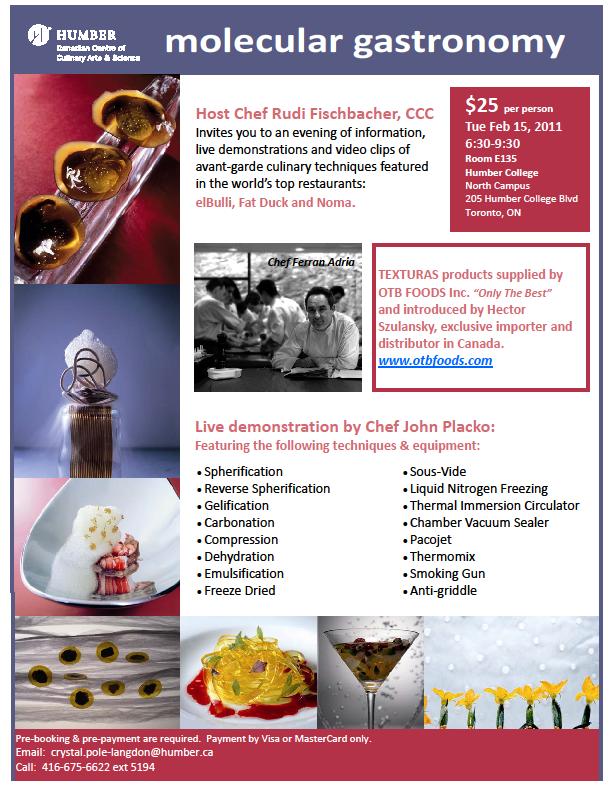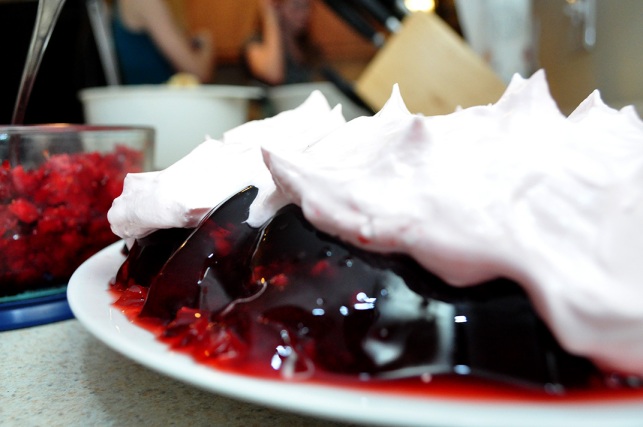In my grad school days, I revelled in the cheap and tasty eats in Toronto's Chinatown but found that after these meals my ears would ring and the tip of my nose would get numb - I thought I had an allergy to MSG.

Turns out a lot of folks thought that too (called it Chinese restaurant syndrome) but they/we were too quick to point fingers. Turns out that there was a bit of racialization in this accusation that it was Chinese food only that creates these reactions. Professor Ian Mosby of York University wrote a
history article on how the connection between MSG and chinese food came about:
This paper examines the ‘discovery’ of the Chinese restaurant syndrome in 1968 and subsequent reactions by the medical community, scientists, public health authorities and the general public to dangers posed by the common food additive monosodium glutamate (MSG) and by Chinese cooking more generally. It argues that Chinese restaurant syndrome was, at its core, a product of a racialised discourse that framed much of the scientific, medical and popular discussion surrounding the condition. This particular debate brought to the surface a number of widely held assumptions about the strangely ‘exotic’, ‘bizarre’ and ‘excessive’ practices associated with Chinese cooking which, ultimately, meant that few of those studying the Chinese restaurant syndrome would question the ethnic origins of the condition.
Research has shown that allergies to the MSG are few and far between - for most people it is probably a sensitivity to something else in the food. In proper clinical trials, people who were convinced they were allergic, could eat food with MSG added without any reaction if they did not know it had been added. There is some speculation that MSG could increase a person's sensitivity to something else in the food though.
In fact, the flavour imparted by MSG, unami, is one of the five primary tastes (salty, bitter, sweet, and sour are the other four) and is present in many foods that we eat regularly.
In the West, Brillat-Savarin in his classic 1825 treatise “The Physiology of Taste” proposed the name “osmasome” to identify the essence of meaty taste, but was not able to isolate the key substance. The discovery of umami in Japan may have been in part due to the simplicity of “dashi,” which is prepared simply by dipping dried kelp (konbu) into boiling water. At the beginning of the 20th century, Ikeda noticed that an unidentified taste quality, dis- tinct from the four basic tastes (sweet, salty, sour and bitter), was present in palatable foods. He detected this taste most clearly in soups and in “dashi” prepared from kelp (konbu) or dried skipjack (katsuobushi), both of which have been used traditionally in Japanese cooking. Subsequently, he investi- gated the constituents of the dried konbu and discovered the taste to be contributed by the glutamate it contained. He named this taste “umami”. From: Yamaguchi S, Ninomiya K., J Nutr. 2000 Apr;130(4S Suppl):921S-6S. Umami and food palatability
This table shows some of the glutamate levels in food ("no msg added"):
 |
| Yamaguchi S, Ninomiya K., J Nutr. 2000 Apr;130(4S Suppl):921S-6S. Umami and food palatability |
[This table begs further research into why parmesan cheese has such a high glutamate count compared to other cheeses - in a future post perhaps.]
L-Glutamic acid is the amino acid component of MSG, and has a long history of use in foods as a flavor enhancer. It is added either as the purified monosodium salt or as a component of a mix of amino acids and small peptides resulting from the acid or enzymatic hydrolysis of proteins. This amino acid is a major constituent of food proteins (in some foods comprising 20% of the total amino acid content), a pivotal metabolic intermediate in amino acid metabolism and a major energy source for cardiac myocytes. Regardless of dietary source (protein, protein hydrolysates or salts of free glutamic acid, including the monosodium salt MSG), all glutamate molecules entering the circulation from the gastrointestinal tract are structurally identical.
Raif S. Geha, Alexa Beiser, Clement Ren, et al. Review of Alleged Reaction to Monosodium Glutamate and Outcome of a Multicenter Double-Blind Placebo-Controlled Study.
So according to Geha et al ("et al" means "and all the other authors of the paper") it should not matter where you get glutamate molecules - they should all give you a reaction if you are going to get one.
So try a tomato and polenta tart (loaded with naturally occurring glutamates):
From: http://guiltykitchen.com/2010/08/20/heirloom-tomato-polenta-tart-and-a-giveaway/
Heirloom Tomato & Polenta Tart
 |
| Photo from Guilty Kitchen |
Yield: One 9″ Tart, about 8 servings
Prep Time: 30 minutes
Cooking Time: 60 minutes4 cups low sodium chicken stock
1/2 tsp salt
1 cup coarse whole grain cornmeal
2 Tbsp butter
2 medium sized cobs of fresh corn
2 tbsp fresh rosemary, minced
1 clove garlic, minced
90g Parmesan Cheese, grated fine
2 Tbsp butter
300 g ricotta cheese
1 large egg
1 1/2 lb. Heirloom tomatoes (about 2 large tomatoes), sliced (about 1/4″ thick)
sea or kosher salt to taste
fresh cracked pepper to taste
1. In a large, heavy bottomed sauce pan, bring stock to a boil.
2. In an even stream, pour in the cornmeal, whisking as you do so. Stir in salt.
3. Bring to a boil, then lower to a simmer, stirring very often. Continue to stir and check on the polenta for the next 30-40 minutes.
4. Meanwhile, in another large saucepan, fill about half way with water and add about a tsp of salt. Bring to a boil, add in the corn and cook for about 5 minutes.
5. Remove the corn and run under cold water to stop the cooking process and make it easy to handle.
6. Hold the corn upright (vertically) and run a knife blade down all sides to remove the kernels.
7. In a large sauté pan, melt 2 Tbsp of butter and add in the corn, rosemary and garlic. Sauté on medium high until the corn begins to take on a golden look to it and the garlic is fully cooked. About 6-7 minutes.
8. When the polenta is finished, stir in 2 tbsp of butter, some pepper and the Parmesan cheese. Mix in the corn and rosemary mixture as well and set aside for a minute.
9. Remove ricotta from refrigerator and stir in one egg and salt and pepper to taste, mixing until completely incorporated.
10. Grease a 9″ round baking dish (preferably glass).
11. Line greased baking dish with polenta, pushing it up so it meets the sides and leaves a bit of a well in the center for the remaining ingredients. Kind of like you are making a very thickly crusted pie.
12. Pour the seasoned ricotta into the well and even it out with a spatula or large spoon.
13. Top tart with concentric rings of tomato slices. Season with salt and pepper and bake in a 400°F oven for 45-60 minutes.
14. Allow to cool for 10 minutes before slicing and serve with a side salad for a wonderfully refreshing, seasonal dinner.
UPDATE: Additional reference!
Alex Renton
The Observer, Sunday 10 July 2005
References
A. N. Williams, K. M. Woessner, “Monosodium glutamate 'allergy': menace or myth?” Clinical & Experimental Allergy May 2009, 39(5), Pages: 640-646
Ian Mosby, `That Won-Ton Soup Headache’: The Chinese Restaurant Syndrome, MSG and the Making of American Food, 1968–1980 Social History of Medicine April 2009, 22 (1), pg. 133-151
Raif S. Geha, Alexa Beiser, Clement Ren, et al. Review of Alleged Reaction to Monosodium Glutamate and Outcome of a Multicenter Double-Blind Placebo-Controlled Study. Journal of Nutrition April 2000 130, 1058 suppl.

































